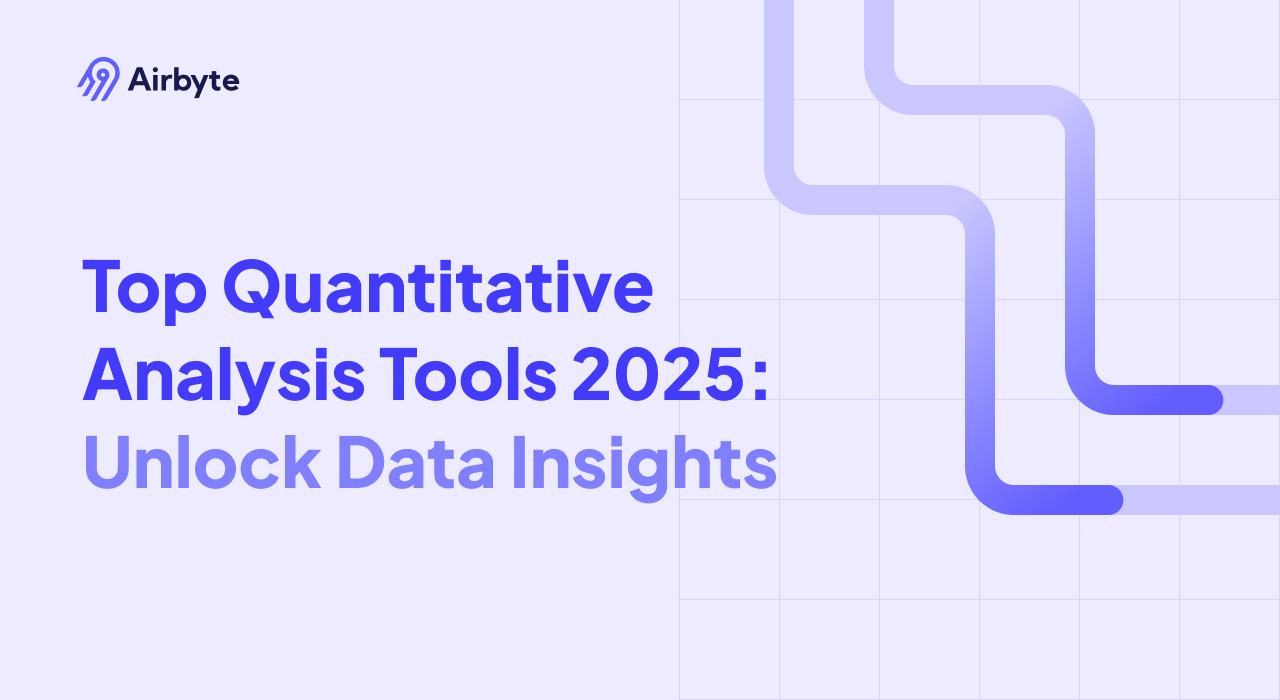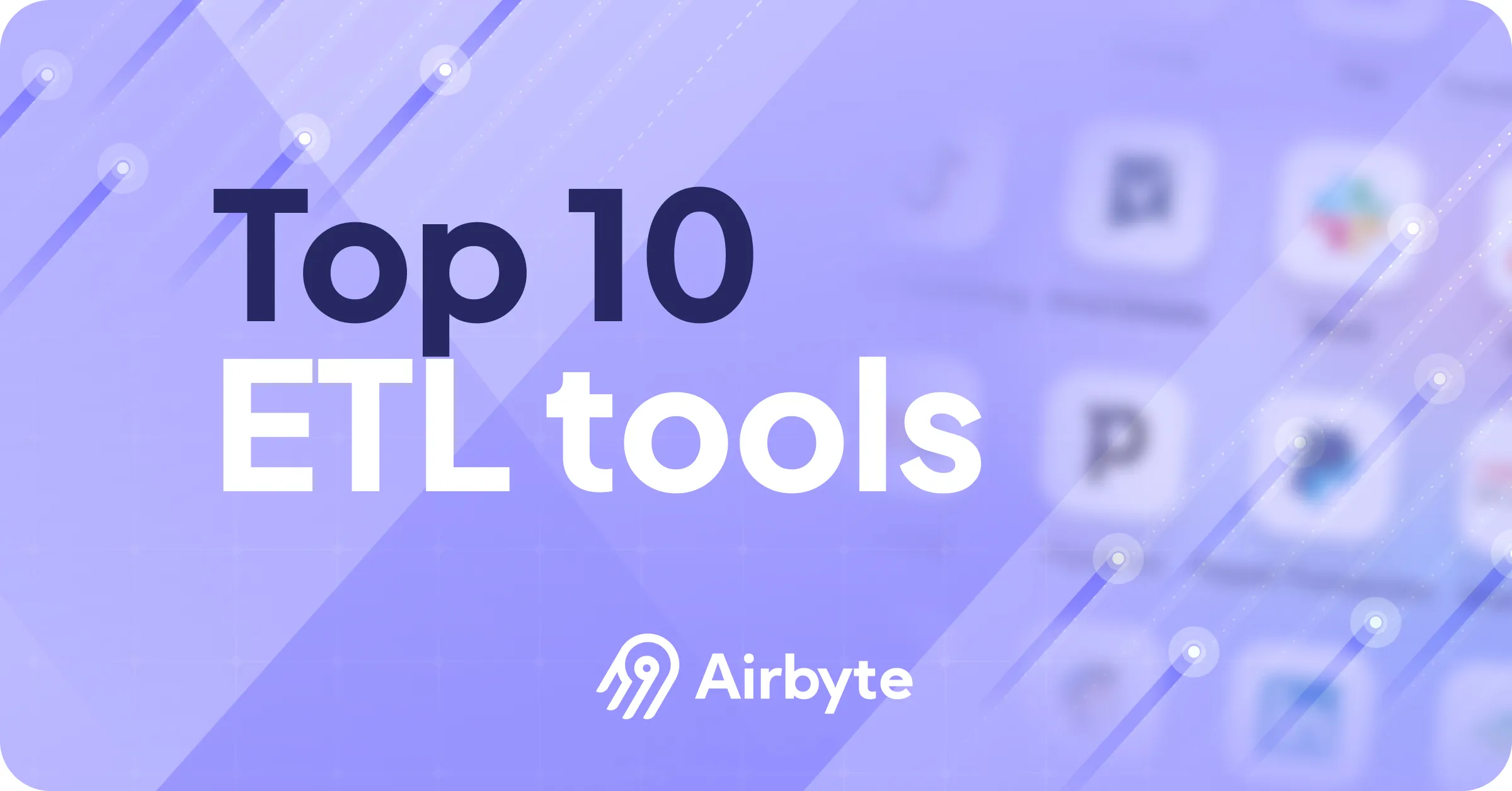Top Quantitative Analysis Tools 2025: Unlock Data Insights
Summarize this article with:


Quantitative research is only as strong as the tools behind it. Whether you're running a cluster analysis, coding survey data, or managing mixed methods research, precision depends on having the right infrastructure from collection to analysis results.
In 2025, data scientists, analysts, and social sciences researchers work with large datasets made up of numerical values, structured responses, and open-ended customer feedback. The challenge isn't just analyzing quantitative data, it's preparing and integrating it across data sources like Google Forms, CRMs, and analytics platforms.
That's where platforms like MAXQDA 2024, SPSS, Stata software, and NVivo software stand out, combining statistical techniques, data visualization, and AI assist features in powerful packages. This guide explores the best quantitative analysis tools for turning raw data into meaningful insights.
Why Do Quantitative Analysis Tools Still Matter in 2025?
Despite the rise of no-code dashboards and automated reporting, quantitative analysis remains a cornerstone of advanced research and business intelligence. These tools offer deeper insights, flexibility, and control over how numerical data is processed and interpreted.
When you're working with quantitative data, including ordinal, nominal, interval, and ratio types, tools like SPSS, Stata, and MAXQDA software help you run precise statistical tests, visualize distributions, and test hypotheses based on clear research objectives. Whether it's exploratory data analysis or predictive analytics, teams can track behavior, segment audiences, or validate models.
Modern platforms like MAXQDA 2024 go further by offering AI-enhanced coding, enabling faster analysis of both structured and unstructured data. With features like auto-tagging, code frequency tracking, and sentiment scoring, these tools bridge the gap between qualitative data and quantitative data analysis, delivering valuable insights for any team handling data quickly at scale.
What Are the Top Quantitative Analysis Tools to Know in 2025?
The best quantitative data analysis tools today are designed for flexibility, scale, and specialization. From predictive modeling to descriptive statistics, they help teams manage data sets, automate repetitive tasks, and align analytics with broader business and research questions.
Tool Comparison Table: Top Quantitative Analysis Tools (2025)
Top Quantitative Analysis Tools
1. MAXQDA 2024
MAXQDA 2024 is built for researchers managing both qualitative data and quantitative data. Whether you're tagging open-ended responses or analyzing structured survey outputs, it provides the statistical framework and automation to extract meaningful insights at scale.
Key Features:
- AI coding assist with automated suggestions
- Matrix queries for complex data relationships
- Survey integration with Google Forms and CRMs
- Predictive modeling capabilities
- Cross-platform support (Mac and Windows)
Best For:
- Mixed methods research workflows
- Market research and stakeholder reporting
- Academic research with AI-enhanced coding
- Teams combining qualitative and quantitative analysis
2. SPSS
SPSS is one of the most recognized quantitative data analysis software platforms globally. It's widely used in academia and business for its ability to run everything from basic descriptive statistics to complex inferential statistics and regression analysis.
Key Features:
- Comprehensive statistical procedures (ANOVA, regression, etc.)
- Clean, user-friendly interface
- Easy data export and integration capabilities
- Repeatable analysis workflows
- Strong academic and business adoption
Best For:
- Structured survey data analysis
- Academic research and education
- Business analytics with statistical testing
- Teams needing accessible statistical procedures
3. Stata
Stata software is ideal for analysts working with large datasets, especially in fields like economics, public policy, and epidemiology. It's known for its speed, reproducibility, and support for advanced statistical procedures like regression analysis, panel data models, and time-series forecasting.
Key Features:
- Powerful scripting language for automation
- Advanced econometric and statistical procedures
- Excellent handling of panel and longitudinal data
- Full audit trails and version control
- High-speed processing of large datasets
Best For:
- Economic and policy research
- Large-scale quantitative analysis
- Academic and institutional research
- Reproducible research workflows
4. NVivo
NVivo software is a leader in qualitative data analysis programs, but its capabilities extend far beyond interviews and open-ended responses. It supports mixed methods research analysis, allowing teams to align coded text with structured quantitative data for integrated insights.
Key Features:
- Matrix coding and visualization tools
- AI-assisted auto-tagging and pattern recognition
- Integration with Google Forms, CRMs, and Excel
- Visual nodes and thematic analysis capabilities
- Mixed methods research support
Best For:
- Qualitative research with quantitative elements
- Social science and UX research
- Customer feedback analysis
- Academic institutions and research teams
5. Excel + Power Query
Excel with Power Query remains a powerful entry point for researchers and analysts working with numerical data and sample data. While it lacks the complexity of other statistical analysis tools, its accessibility and flexibility make it ideal for fast prototyping, cleaning, and reshaping datasets.
Key Features:
- Power Query for automated data cleaning and transformation
- Built-in statistical functions and formulas
- Wide integration with cloud platforms and APIs
- Familiar interface with low learning curve
- Cost-effective solution included in Office suite
Best For:
- Lightweight statistical analysis
- Data preparation and cleaning
- Small to medium-sized datasets
- Teams with limited statistical software budgets
6. JMP
JMP statistical software is designed for professionals who prefer to explore data visually. It combines exploratory data analysis, modeling, and predictive analytics into an interactive environment that minimizes the need for scripting.
Key Features:
- Interactive visual data exploration
- Design of experiments capabilities
- Dynamic modeling and simulation tools
- Point-and-click interface with minimal scripting
- Strong integration with other statistical software
Best For:
- Visual data exploration and modeling
- Design of experiments in manufacturing/biotech
- Teams preferring interactive interfaces
- Quality control and process improvement
7. MATLAB
MATLAB excels in technical, scientific, and engineering environments where numerical values and matrix operations dominate. It's ideal for building simulations, analyzing sensor data, modeling complex systems, and running predictive modeling using its powerful toolbox ecosystem.
Key Features:
- Comprehensive toolbox ecosystem for specialized analysis
- Advanced matrix operations and numerical computing
- Machine learning and signal processing capabilities
- Excellent visualization and documentation features
- Strong simulation and modeling tools
Best For:
- Engineering and scientific research
- Advanced mathematical modeling
- Signal processing and machine learning
- Teams requiring simulation capabilities
8. Mode / Hex
Mode and Hex are modern tools combining SQL, Python, and visualization into collaborative notebooks. Ideal for fast-paced data teams, these platforms help data scientists build and share real-time analysis features with full context and reproducibility.
Key Features:
- Collaborative notebooks with SQL and Python
- Live connections to data warehouses
- Version control and sharing capabilities
- Custom dashboard creation
- Integration with modern data stack tools
Best For:
- Data science teams needing collaboration
- Real-time analysis and reporting
- Teams using modern data warehouse architectures
- Agile analytics workflows
Limited offline capabilities
9. SAS
SAS software is purpose-built for large enterprises, particularly in regulated industries like banking, pharma, and healthcare. It's known for its ability to handle sensitive numerical data, run advanced statistical procedures, and meet compliance requirements with ease.
Key Features:
- Enterprise-grade security and compliance features
- Advanced statistical procedures and macros
- Comprehensive audit trails and governance
- Automated batch processing capabilities
- Industry-specific solutions and support
Best For:
- Large enterprises with compliance requirements
- Regulated industries (banking, pharma, healthcare)
- Organizations needing enterprise-grade governance
- Teams requiring extensive audit capabilities
10. R / RStudio
R is a fully open-source environment for statistical computing, supported by thousands of packages and an active research community. RStudio, its primary IDE, simplifies coding, plotting, and data management across a variety of research domains.
Key Features:
- Extensive CRAN library with thousands of packages
- Completely free and open-source
- Advanced statistical and machine learning capabilities
- Excellent data visualization with ggplot2
- Strong community support and documentation
Best For:
- Academic research and education
- Custom statistical analysis and modeling
- Teams with programming expertise
- Organizations seeking cost-effective solutions
How Does Data Integration Make or Break Quantitative Analysis?
Even the most advanced statistical tools fall short without reliable data integration. Poor pipeline design leads to duplicated records, missing values, and delays in time-sensitive reporting.
Airbyte solves this problem by syncing input data from hundreds of sources, like Google Forms, databases, CRMs, or analytics tools into your preferred destination. Whether you're using quantitative data analysis software for market research, modeling customer lifetime value, or tracking website traffic, Airbyte makes data manipulation seamless.
By standardizing and automating the data cleaning process, teams avoid bottlenecks and enable fast access to high-quality data for statistical analysis.
Which Quantitative Tool Is Right for Your Research Team?
There's no one-size-fits-all. For structured numerical data, go with SPSS, Stata, or JMP. If your research includes interviews or freeform responses, MAXQDA software, NVivo, or R are ideal.
If your team needs scripting, reproducibility, and data-driven decision making, use RStudio, MATLAB, or Mode. No matter what you choose, make sure your data sources are clean and connected, that's where Airbyte supports your entire quantitative research workflow.
Connect your data sources with Airbyte to power accurate, scalable quantitative analysis, without the manual prep or integration headaches.
Frequently Asked Questions
What does quantitative data refer to in research and analytics?
Quantitative data refers to information that can be measured and expressed numerically, such as customer ratings, click counts, or revenue figures. It forms the basis for applying statistical methods and generating reliable insights through advanced analytics.
How do statistical analysis systems help users interact with data more effectively?
A robust statistical analysis system allows users to clean, transform, and model data through repeatable workflows and built-in advanced features. This helps teams identify patterns, automate calculations, and minimize the learning curve across tools in the data science stack.
Why is it important to understand how users interact with data platforms?
Studying how users interact with analysis platforms highlights usability gaps and informs better dashboard and report design. The more intuitive the tool, the faster analysts can apply statistical methods and explore insights without friction.
What should you do next?
Hope you enjoyed the reading. Here are the 3 ways we can help you in your data journey:



Frequently Asked Questions
What is ETL?
ETL, an acronym for Extract, Transform, Load, is a vital data integration process. It involves extracting data from diverse sources, transforming it into a usable format, and loading it into a database, data warehouse or data lake. This process enables meaningful data analysis, enhancing business intelligence.
This can be done by building a data pipeline manually, usually a Python script (you can leverage a tool as Apache Airflow for this). This process can take more than a full week of development. Or it can be done in minutes on Airbyte in three easy steps: set it up as a source, choose a destination among 50 available off the shelf, and define which data you want to transfer and how frequently.
The most prominent ETL tools to extract data include: Airbyte, Fivetran, StitchData, Matillion, and Talend Data Integration. These ETL and ELT tools help in extracting data from various sources (APIs, databases, and more), transforming it efficiently, and loading it into a database, data warehouse or data lake, enhancing data management capabilities.
What is ELT?
ELT, standing for Extract, Load, Transform, is a modern take on the traditional ETL data integration process. In ELT, data is first extracted from various sources, loaded directly into a data warehouse, and then transformed. This approach enhances data processing speed, analytical flexibility and autonomy.
Difference between ETL and ELT?
ETL and ELT are critical data integration strategies with key differences. ETL (Extract, Transform, Load) transforms data before loading, ideal for structured data. In contrast, ELT (Extract, Load, Transform) loads data before transformation, perfect for processing large, diverse data sets in modern data warehouses. ELT is becoming the new standard as it offers a lot more flexibility and autonomy to data analysts.

.webp)